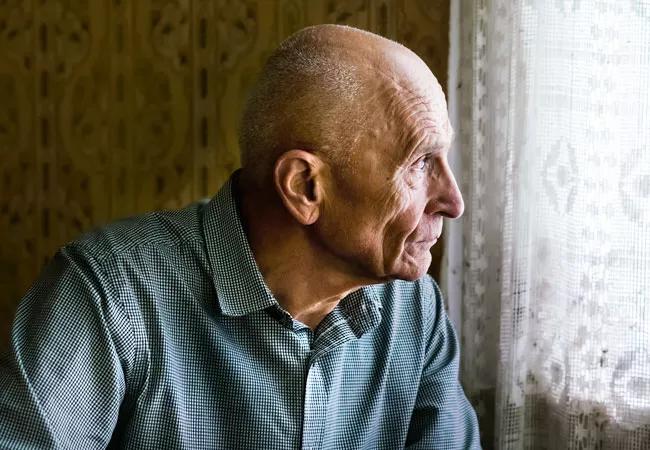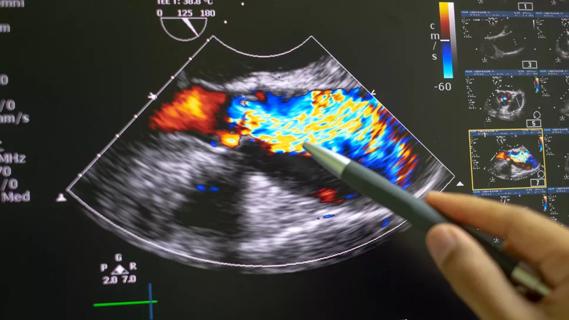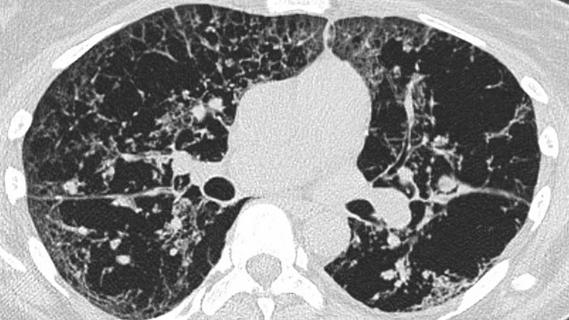Formal assessment aimed at unmasking psychological distress following PE treatment

Pulmonary embolism (PE) is a leading cause of cardiovascular death, yet little research has been done on psychological distress in PE survivors. A study now underway at Cleveland Clinic is evaluating a new protocol for identifying anxiety, depression, fear of recurrence and posttraumatic symptoms in these patients.
Advertisement
Cleveland Clinic is a non-profit academic medical center. Advertising on our site helps support our mission. We do not endorse non-Cleveland Clinic products or services. Policy
The prospective observational cohort study will be the first of its kind to evaluate the method of treatment for PE in the context of whether or not patients have psychological distress during the follow-up period after hospital discharge.
“We’ve noticed that a lot of PE survivors have extreme anxiety and sometimes depression,” says vascular medicine physician Leben Tefera, MD, Director of the Pulmonary Embolism Response Team (PERT) Clinic at Cleveland Clinic. “They’re so worried about experiencing another PE that the psychological impact is just as crippling in terms of quality of life as a long-term disability.”
“When we examine a patient recovering from PE, we may find that the patient still perceives there is a problem even though there may be resolution of impaired ventilation/perfusion of lung tissue and dysfunction in the right ventricle’s contractile performance,” adds Scott Cameron, MD, PhD, Section Head of Vascular Medicine at Cleveland Clinic. “Our job as physicians is to be aware of the biopsychosocial impact of disease on a patient and consider that their symptoms may be from unresolved psychological trauma caused by PE.”
Multidisciplinary in nature, Cleveland Clinic’s PERT team includes specialists in areas such as vascular medicine, cardiology, pulmonology, interventional radiology and cardiothoracic surgery who collaborate on decision-making about acute and post-discharge care for patients with PE. The aim is to provide rapid evaluation, risk stratification and management recommendations and to foster a range of viewpoints in patient evaluation, with an eye toward swift initiation of optimal therapy for PE.
Advertisement
Recently, the PERT team developed a protocol to help identify psychological distress in PE survivors and refer patients to Karen Hurley, PhD, of Cleveland Clinic’s Department of Psychiatry and Psychology. “In the past year, the team has informally evaluated approximately 100 PE survivors and found that about half have anxiety or depression, which is what we would expect, based on the literature in this area,” says Dr. Tefera. “The study is a way to formalize and validate our approach.”
Several studies of survivors of PE have described a “post-PE syndrome” that includes physical symptoms such as fatigue, exercise intolerance, dyspnea and chronic functional limitations. At one-year follow-up, nearly half of these patients have exercise limitations that negatively affect their quality of life.
Survivors of PE also may experience anxiety, depression and posttraumatic stress symptoms, but few data exist about the incidence and severity of these effects. The few studies in the literature that used validated measures were mainly small and cross-sectional in design. The new Cleveland Clinic investigation will be largest prospective study examining psychological distress in PE survivors.
The study’s design was recently described in Research and Practice in Thrombosis and Haemostasis. Study participants must be receiving care in Cleveland Clinic’s outpatient PERT clinic. The investigators anticipate enrolling 200 to 300 patients, given that the PERT team is activated — or called upon to evaluate individuals with suspected PE — an average of three times per week.
Advertisement
Assessment of psychological distress will be done with five well-validated quality-of-life measures:
Responses by participants to the various questionnaires will be recorded on an iPad during follow-up visits to the PERT clinic at 1, 3, 6 and 12 months after diagnosis and treatment. The primary outcome is incidence of psychological distress symptoms in PE survivors after hospital discharge. The secondary aim is to assess the influence of acute disease, etiology and treatment of PE on psychological distress.
At the study’s conclusion, the researchers anticipate submitting a research report based on their protocol to a peer-reviewed journal. Their hope is that the data collected will spur integration of evidence-based psychosocial interventions into multidisciplinary care of survivors of PE.
“A long-term goal is adoption of our protocol by other institutions, if the study results are positive,” Dr. Tefera says. “More immediately, we want to raise awareness of psychological distress in patients treated for PE and to encourage clinicians to screen for distress symptoms. That can be as simple as asking how a patient is coping with the diagnosis and whether it’s adversely affecting their quality of life.”
Advertisement
Advertisement

Rising rates in young miners illustrate the need for consistent prevention messaging from employers and clinicians

Multidisciplinary focus on an often underdiagnosed and ineffectively treated pulmonary disease

Management and diagnostic insights from an infectious disease specialist and a pulmonary specialist

Treatments can be effective, but timely diagnosis is key

Insights for diagnosing, assessing and treating

A Cleveland Clinic pulmonologist highlights several factors to be aware of when treating patients

Patient experience improves with a multidisciplinary approach

A mindset shift has changed the way pulmonologists both treat and define PFF